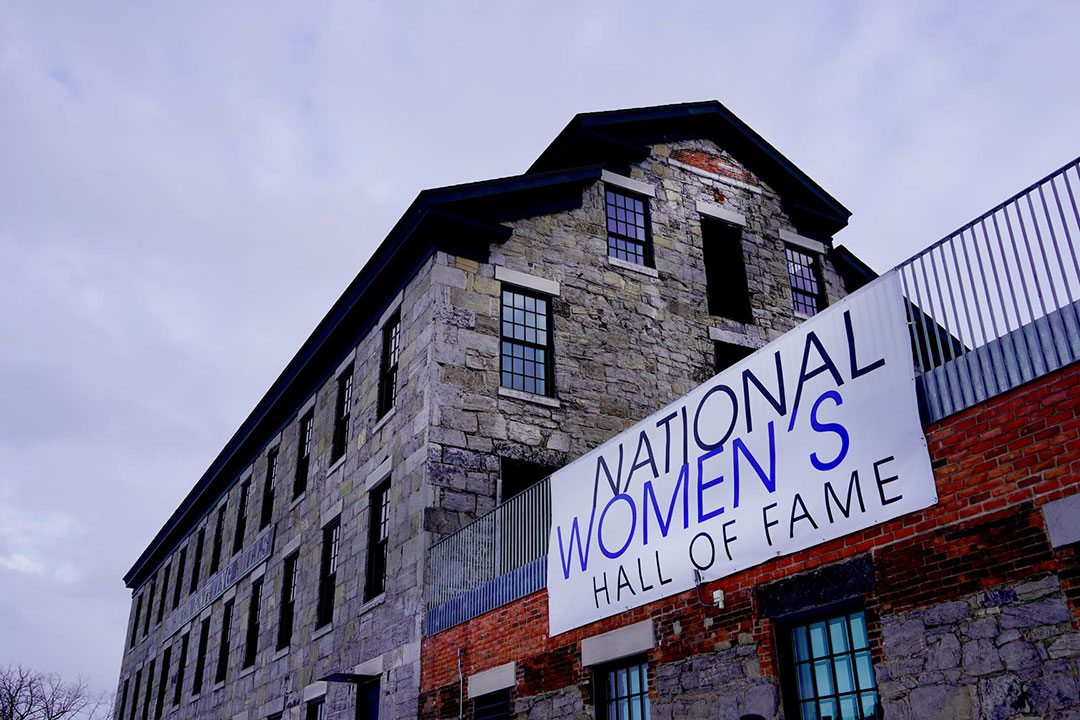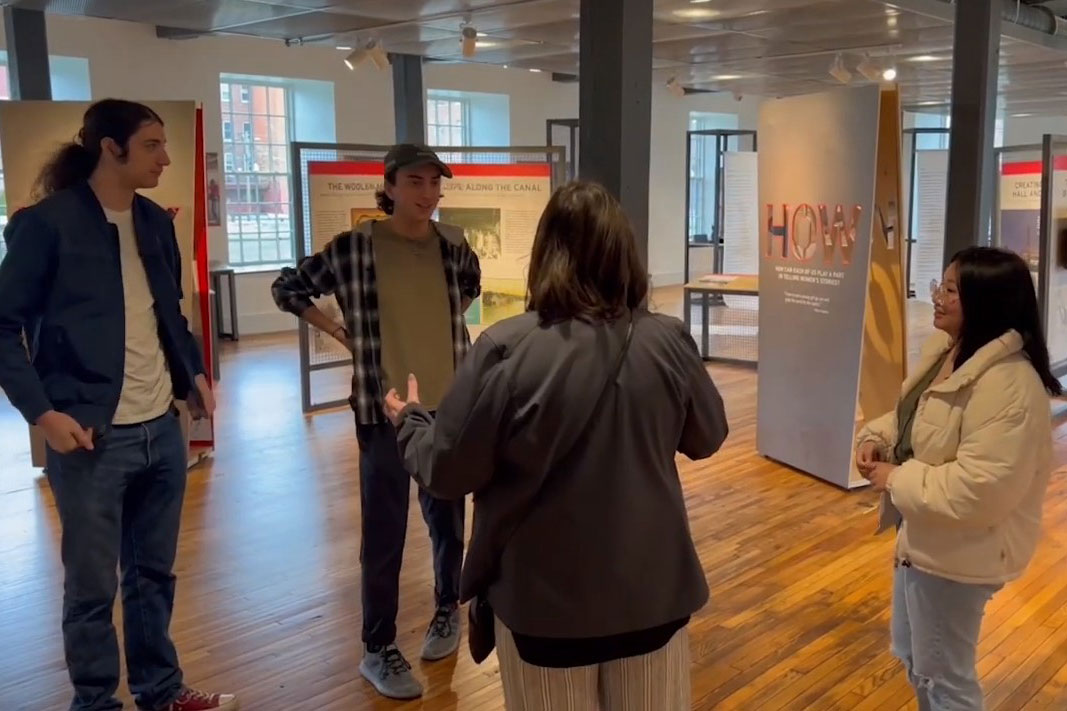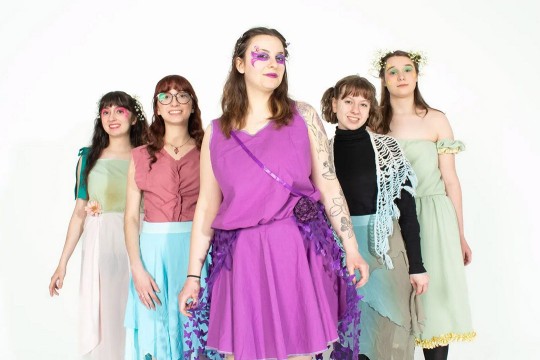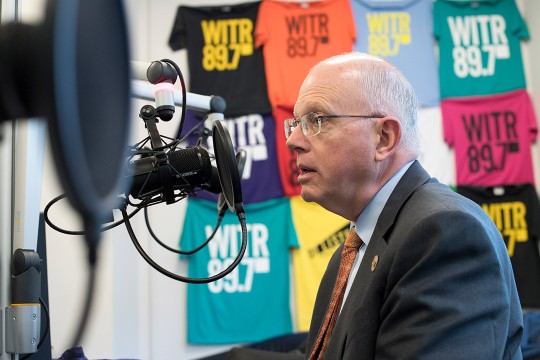Software engineering students digitize National Women’s Hall of Fame nomination process
Senior project allows students to develop skills and help nonprofit organization
Provided photo
RIT software engineering students are completing a senior project that will help automate the National Women’s Hall of Fame nomination and inductee selection process.
RIT software engineering students are developing a new application to help the National Women’s Hall of Fame streamline its nomination and inductee selection process.
Every year, the National Women’s Hall of Fame in Seneca Falls, N.Y., receives hundreds of nominations that need to be evaluated and judged by hand. In 2022, Michelle Obama and NASA mathematician Katherine Johnson were just two of the inspiring women inducted into the institution—which now has 302 inductees representing some of America’s greatest women.
The new Inductee Selection application created at RIT aims to digitize what has become a logistically daunting task. Not only will the improvements increase productivity and make it easier for people to submit nominations, they will also create a more fair and transparent selection process.
Provided photo
As part of their senior project, RIT software engineering students toured the National Women’s Hall of Fame in Seneca Falls, N.Y., and attended the 2022 induction ceremony.
The web-based portal is being developed as part of a year-long senior project for software engineering bachelor’s degree students. Throughout the capstone course, students have gotten exposure to the entire software development lifecycle. They have also interviewed Hall of Fame stakeholders and attended an induction ceremony.
“The project is like a puzzle we are solving one piece at a time, and I have been enjoying every piece along the way,” said Celeste Gambardella, a fifth-year software engineering student and the team’s project manager. “With each piece we put together, the closer we get to delivering a final product that the National Women’s Hall of Fame will hopefully use for years to come.”
The application started with a problem, like all senior projects. Each year, teams of students are assigned to solve challenging, real-world software issues for different companies and organizations that submit proposals. Teams work with sponsors to carry the project from inception all the way to a functional software tool that the organization can use.
This is one of dozens of software engineering senior projects that students are working on this year. Samuel Malachowsky, a senior lecturer of software engineering, leads the capstone program and coaches the National Women’s Hall of Fame team.
“It’s a soup-to-nuts experience,” said Malachowsky. “Capstone helps students see how everything fits together as one big system. Students get to showcase their diverse set of skills, and it gives them something great to look back on when they graduate.”
The RIT software engineering student team includes Gambardella, Daniel Kamvakis, Giovanni Melchionne, Kelsey Donovan, and May Wu.
After talking with Jennifer Gabriel, executive director of the National Women’s Hall of Fame, the team established a set of requirements and plan for the project, including goals, scope, methodology, domain model, planned milestones, major deliverables, user stories, a communication and stakeholder plan, and risk management plan.
Gabriel explained that the Hall of Fame relies on the public to nominate deserving women who create enduring change and inspire others. A diverse panel of experts scores the nominations, passes their recommendations to an independent inductee selection committee, and then recommends a class of inductees for the board of directors to approve.
“Each nomination is thoroughly reviewed by at least three independent judges who are matched based on their areas of expertise,” said Gabriel. “For example, a computer scientist’s nomination is evaluated by judges who are established in the same field. Automation will allow us to further reduce instances of intended or unintended bias that could impact the outcome.”
In September, the RIT team was invited to the 2022 Induction Ceremony at the Hall of Fame. That experience helped the team build a profound understanding about the institution and its mission.
“RIT students are on the cutting edge of technology and its possibilities, and this project will result in the savings of so much time and effort that would otherwise be wasted managing a manual process,” Gabriel said. “They have done exceptional work and the outcome is something that will serve the Hall for many years to come.”
The open source nomination portal and matching system could be used for selecting the Hall of Fame inductees of 2024. It will manage nominations, match nominees with judges, and track the judging status.
Throughout the project, the RIT team has used best practices in accessibility and user design, while also maintaining the integrity of the logic and database layers. The team also gained a better understanding of how to approach hosting projects with a cloud provider.
“I got to take on a project manager role, while also getting the ability to act as a full stack developer working on the user-facing front-end and ensuring the back-end logic and application programming interface are all working correctly with our database,” said Gambardella. “This has given me exposure to both sides of what I could see myself doing in the future, which is quite exciting.”














